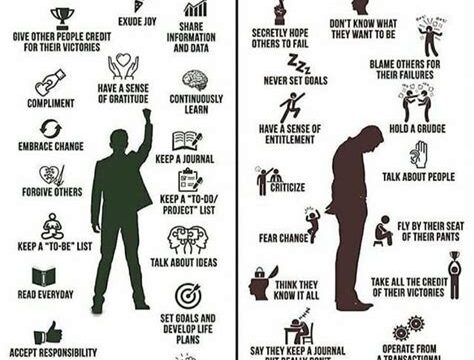Setting Clear Objectives for the Workshop
When conducting a workshop, it is essential to set clear objectives in order to ensure that participants have a clear understanding of what they will achieve by the end of the session. By outlining specific goals, you can provide a roadmap for the workshop and help participants stay focused. Setting clear objectives not only helps to guide the content and structure of the workshop but also allows participants to track their progress and measure the success of the session.
An effective way to set clear objectives is to define the desired outcomes of the workshop. These outcomes should be specific, measurable, achievable, relevant, and time-bound (S.M.A.R.T). By having specific objectives, you can clearly communicate what participants should be able to accomplish. Measurable objectives allow you to assess the progress and success of the participants. Achievable objectives ensure that participants are able to realistically accomplish the set goals within the given timeframe.
Furthermore, it is crucial to make the objectives relevant to the participants’ interests and needs. By highlighting the relevance of the objectives to their daily lives or work, participants will be more motivated to actively engage and achieve the desired outcomes. Lastly, time-bound objectives provide a sense of urgency and encourage participants to stay on track throughout the workshop.
Creating an Engaging and Interactive Atmosphere
Creating an engaging and interactive atmosphere is essential to ensure the success of any workshop. When participants feel engaged and involved, they are more likely to actively participate and retain the information presented. There are several strategies that workshop facilitators can employ to foster an interactive environment.
One crucial element is to set clear expectations right from the start. Let participants know that their active involvement is valued and encouraged throughout the workshop. This can be accomplished by explaining the purpose of the workshop and the benefits they will gain from participating.
Another effective strategy is to utilize interactive tools and group activities. Incorporate technology, such as polling apps or online collaboration platforms, to allow participants to actively contribute and share their thoughts. Breakout sessions and group discussions can also enhance interaction by promoting collaboration and idea sharing among participants.
In addition, encouraging active participation and discussion is essential. Create a safe and inclusive environment where everyone feels comfortable sharing their opinions and asking questions. Engage participants by asking thought-provoking questions, facilitating group discussions, and actively listening to their input.
Lastly, providing actionable takeaways and resources at the end of the workshop ensures that participants leave with tangible tools they can apply in their own lives or professional settings. This can be done through handouts, online resources, or follow-up materials that reinforce the key concepts covered in the workshop.
Overall, creating an engaging and interactive atmosphere in a workshop is crucial for maximizing participant engagement and learning. By setting clear expectations, utilizing interactive tools and activities, encouraging active participation and discussion, and providing actionable takeaways, facilitators can create an environment that fosters interaction and enhances the overall workshop experience.
Selecting Relevant and Practical Topics
In order to facilitate a successful and effective workshop, it is crucial to select relevant and practical topics that will resonate with the participants. Choosing the right topics can greatly impact the overall engagement and satisfaction levels of the attendees, as well as the overall success of the workshop.
One of the key factors to consider when selecting topics for a workshop is audience relevance. It is important to understand the target audience and their specific needs, interests, and challenges. By catering the topics directly to the participants, they will feel more engaged and motivated to actively participate in the workshop.
Practicality is another important aspect to consider when choosing workshop topics. The topics should be relevant to the participants’ everyday work or personal lives. They should be able to apply the knowledge and skills gained from the workshop in their day-to-day activities. Selecting practical topics ensures that the participants can immediately implement what they have learned, making the workshop more valuable and impactful.
- Identify the goals of the workshop: Before selecting topics, it is important to clearly define the objectives and goals of the workshop. This will help in narrowing down the topics that align with the desired outcomes of the workshop.
- Conduct a needs assessment: It is beneficial to conduct a needs assessment to understand the specific challenges and areas of improvement that the participants are looking to address. This will help in identifying topics that are most relevant to their needs.
- Consider current trends and industry demands: Keeping up with current trends and industry demands is essential when selecting topics. This ensures that the workshop remains up-to-date and addresses the latest developments in the field.
- Seek participant input: Another effective way to select relevant topics is to seek input from the participants themselves. This can be done through surveys or informal discussions prior to the workshop. By involving the participants in the topic selection process, it increases their sense of ownership and investment in the workshop.
| Benefits of selecting relevant and practical topics |
|---|
| 1. Increased participant engagement and motivation |
| 2. Higher knowledge retention and application |
| 3. Enhanced workshop satisfaction levels |
| 4. Improved overall workshop outcomes and effectiveness |
Designing Effective Workshop Materials
The success of a workshop greatly depends on the materials used during the session. Designing effective workshop materials is crucial for engaging participants and ensuring the information is conveyed clearly. Effective materials not only enhance understanding but also enable participants to apply the concepts learned. In this blog post, we will explore the key considerations and strategies for designing workshop materials that are impactful and facilitate effective learning.
When designing workshop materials, it is important to identify the learning objectives. By clearly defining the goals of the workshop, you can tailor the materials accordingly. Consider what specific knowledge or skills participants should acquire by the end of the session, and ensure that the materials align with these objectives. Clear objectives help in selecting and organizing the content of the materials, making them more focused and relevant to the participants.
Another essential aspect of designing effective workshop materials is organizing the content in a logical and coherent manner. Use headings, subheadings, and bullet points to break down the information into digestible chunks. This not only enhances readability but also helps participants follow the flow of the material. Utilizing lists and tables can be particularly useful for organizing and presenting complex information in a structured and easily understandable format.
Utilizing Interactive Tools and Group Activities
Interactive tools and group activities play a crucial role in fostering engagement and enhancing the learning experience during workshops. When participants actively participate and collaborate with one another, it creates an atmosphere of enthusiasm and shared knowledge. By incorporating interactive tools and group activities into your workshop, you can ensure that participants not only grasp the concepts better but also retain the information for longer periods of time.
One effective interactive tool that can be used during workshops is polling software. With polling software, facilitators can present questions or scenarios to the participants, who can then respond in real-time. This not only sparks discussion but also provides valuable insights into the participants’ understanding of the content. Additionally, using a mix of multiple-choice questions and open-ended questions can encourage participants to think critically and share their opinions.
Group activities are another effective way to engage workshop participants. By dividing participants into smaller groups, you can promote collaboration and active learning. One such activity is a case study analysis. Provide participants with a real-life scenario related to the workshop topics, and ask each group to analyze the situation and propose solutions. This allows participants to apply the concepts they have learned, encourages discussion and debate, and promotes problem-solving skills.
Encouraging Active Participation and Discussion
Encouraging active participation and discussion in a workshop can greatly enhance the learning experience for participants. By creating an engaging and interactive atmosphere, workshop facilitators can foster a collaborative environment that encourages attendees to share their thoughts, ask questions, and actively contribute to the discussion. This not only enriches the content of the workshop but also allows participants to learn from one another’s experiences and perspectives.
One way to encourage active participation is by setting clear objectives for the workshop. Clearly defining what participants are expected to learn and achieve during the session can motivate them to actively engage in the activities and discussions. This can be done by outlining the key learning outcomes at the beginning of the workshop and periodically revisiting them throughout the session.
Another effective strategy is to utilize interactive tools and group activities. These can include icebreaker exercises, brainstorming sessions, role-playing scenarios, or small group discussions. These activities provide opportunities for participants to share their ideas, engage in problem-solving exercises, and collaborate with their peers. By incorporating these interactive elements, facilitators can create a dynamic and engaging workshop that encourages active participation.
- Benefits of encouraging active participation and discussion:
- Enhanced learning: Active participation and discussion allow participants to actively engage with the material, deepening their understanding and retention of the content.
- Diverse perspectives: Encouraging participation from all attendees creates an inclusive environment where diverse perspectives can be shared and valued.
- Collaborative learning: Through group activities and discussions, participants can learn from each other’s experiences and collaborate on problem-solving tasks.
- Increased engagement: When participants feel heard and involved, they are more likely to stay engaged throughout the workshop and actively contribute to the discussions.
Finally, providing actionable takeaways and resources is crucial for encouraging active participation. Participants should leave the workshop with tangible tools, strategies, or resources that they can apply in their own lives or work. This can include handouts, worksheets, recommended readings, or access to online resources. By equipping participants with actionable takeaways, facilitators empower them to implement what they have learned and continue the discussion beyond the workshop.
In conclusion, actively encouraging participation and discussion in a workshop is essential for creating a meaningful and impactful learning experience. By setting clear objectives, utilizing interactive tools and activities, and providing actionable takeaways, facilitators can foster an atmosphere that promotes engagement, collaboration, and active learning. When participants feel valued and involved, the workshop becomes a space for meaningful exchange of ideas and collective growth.
Providing Actionable Takeaways and Resources
When attending a workshop, it is important to have clear objectives in mind. These objectives will guide your learning and ensure that you get the most out of the workshop. Setting clear objectives also helps the facilitator understand what the participants hope to achieve, allowing them to tailor the content to meet those needs. By clearly outlining what you hope to gain from the workshop, you can ensure that you walk away with actionable takeaways and resources that will contribute to your personal and professional growth.
One way to ensure that the workshop provides actionable takeaways and resources is by selecting a facilitator who has expertise in the topic being covered. Look for someone who has practical experience and a track record of delivering valuable content. The facilitator should be able to provide real-life examples, case studies, and tangible resources that participants can apply to their own work or projects.
Another important aspect of providing actionable takeaways and resources is designing effective workshop materials. These materials should be well-organized, easy to understand, and visually appealing. Consider using headings, subheadings, and bullet points to break up information and make it easier to digest. Additionally, include relevant charts, tables, and diagrams to illustrate key concepts. This will not only enhance understanding but also serve as a reference for participants to refer back to after the workshop.
Utilizing interactive tools and group activities not only keeps participants engaged throughout the workshop but also provides them with hands-on experience and practical skills. Incorporate activities such as group discussions, role-playing exercises, and problem-solving tasks to encourage active participation and foster collaboration among participants. These activities will not only make the workshop more enjoyable but also help participants internalize the content and apply it in their own contexts.
In order to encourage active participation and discussion, it is important for the facilitator to create an engaging and interactive atmosphere. This can be achieved by fostering a safe and inclusive environment where participants feel comfortable sharing their thoughts and opinions. The facilitator should also be skilled in facilitation techniques such as active listening, open-ended questioning, and encouraging diverse perspectives. By actively involving participants in the discussion, the facilitator can draw out different insights and experiences, enriching the workshop for everyone involved.
Lastly, providing actionable takeaways and resources involves offering participants tangible tools, templates, and resources that they can use long after the workshop is over. This could include providing access to online platforms or communities where participants can continue their learning and networking. It could also involve sharing additional reading materials, downloadable resources, or templates that participants can apply directly to their work. By providing these resources, the facilitator ensures that the workshop’s impact extends beyond the workshop itself, allowing participants to continue their growth and development.
- Set clear objectives for the workshop
- Select a facilitator with expertise in the topic
- Design effective workshop materials
- Utilize interactive tools and group activities
- Create an engaging and interactive atmosphere
- Provide actionable takeaways and resources
| Keywords | Html format |
| workshop | Workshop |
| clear objectives | Clear Objectives |
| actionable takeaways | Actionable Takeaways |
| resources | Resources |
| facilitator | Facilitator |
| engaging | Engaging |
| interactive atmosphere | Interactive Atmosphere |
| practical topics | Practical Topics |
| workshop materials | Workshop Materials |
| interactive tools | Interactive Tools |
| group activities | Group Activities |
| active participation | Active Participation |
| discussion | Discussion |
| actionable takeaways | Actionable Takeaways |
| resources | Resources |
Frequently Asked Questions
1. How can I set clear objectives for a workshop?
To set clear objectives for a workshop, start by clearly defining what you want to achieve and communicate these goals to participants. Break down objectives into specific and measurable outcomes to ensure clarity.
2. What can I do to create an engaging and interactive atmosphere in a workshop?
To create an engaging and interactive atmosphere, encourage active participation through hands-on activities, discussions, and group exercises. Incorporate interactive tools like polls, quizzes, or breakout sessions to keep participants involved and interested.
3. How do I select relevant and practical topics for a workshop?
Choose topics that align with the needs and interests of your target audience. Conduct research or surveys to identify areas of knowledge or skill gaps that can be addressed. Focus on practical and actionable content that participants can apply in their lives or work.
4. What is the key to designing effective workshop materials?
The key to designing effective workshop materials is to make them visually appealing, concise, and easy to understand. Use clear headings, bullet points, and visuals to enhance comprehension. Incorporate interactive elements like videos, case studies, or infographics to make the materials engaging.
5. How can I utilize interactive tools and group activities in a workshop?
Utilize interactive tools like online polling platforms, collaborative whiteboards, or virtual breakout rooms to encourage participation and engagement. Incorporate group activities such as brainstorming sessions, role-plays, or team challenges to foster collaboration.
6. What strategies can I use to encourage active participation and discussion in a workshop?
To encourage active participation and discussion, create a safe and inclusive environment where participants feel comfortable sharing their thoughts and ideas. Ask open-ended questions, facilitate group discussions, and provide opportunities for participants to contribute their perspectives.
7. How can I provide actionable takeaways and resources in a workshop?
Provide participants with tangible and practical takeaways that they can apply immediately. This may include handouts, worksheets, or checklists. Additionally, share relevant resources such as books, articles, or online platforms for further learning and exploration.





